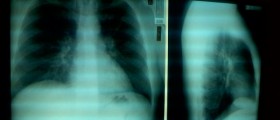
Sometimes, hearing loss does not come alone. Rather, it strikes a person early in life, appearing hand-in-hand with movement difficulties, vision problems and behavioral anomalies, affecting males predominantly. This condition is called deafness-dystonia-optic neuropathy or Mohr-Tranebjærg syndrome.
Signs of Deafness Dystonia Syndrome
Most commonly, the first manifestation of this disease is inner ear nerve damage, occurring in early childhood and resulting in gradual hearing loss. The loss of hearing gets more and more severe in time, leading to complete deafness by the age of 10.
However, in most cases of this syndrome, motor functions of the sufferer get affected during teenage years. The muscles of the victims may become prone to spasms and involuntary tension. On the other hand, some individuals may experience inability to perform certain motor functions. As the disease progresses, this plethora of complications escalates.
As for vision impairment, it strikes during teenage years as well, initially manifesting through sensitivity to light exposure or some other problems regarding eyesight. With time, vision of these people loses quality and becomes blurry, only to result in complete loss of sight in mid-adulthood.
Additionally, during these severe changes which affect the human body suffering from this syndrome, behavioral changes strike as well, making matters even worse. Namely, aggressiveness, paranoid behavior and mood swings are just some of the complications affecting one's personality. By the age of 40, people suffering from deafness dystonia may become demented. Only individuals with less severe forms of this condition have managed to live enough to reach their 60s.
Facts about Deafness Dystonia Syndrome
This condition is extremely rare and less than 70 cases have been reported throughout history until today.
The deafness dystonia syndrome is triggered by a genetic mutation in the TIMM8A gene. Since this gene is responsible for production of TIMM13 protein complex which transports other proteins inside the mitochondria, the mutation results in problems regarding this function and the genesis of all the symptoms and signs of deafness dystonia syndrome.
The X chromosome is the location of the faulty gene. Since males have a single X chromosome, the mutation chances are significantly increased. In women, having two X chromosomes, both of them would need to mutate in order for this condition to arise. Hence the risk group encompasses men. Nevertheless, females with the faulty gene may develop hearing loss and dystonia too. Finally, men who carry the faulty X gene cannot transfer it to their children.

















Your thoughts on this
Loading...